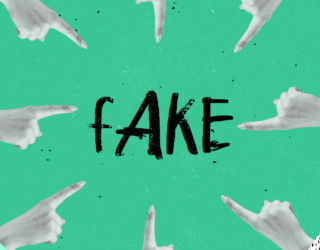The Supreme Court has delivered a judgment that bolsters copyright protection for works of applied art under criminal law: It sets an important precedent in Spain in distinguishing design as an art that deserves protection under both criminal as well as civil law.
The world of fashion design, in which aesthetics are woven into practicality, poses challenges for copyright. Fashion occupies the middle ground: somewhere between decorative and utilitarian, which as the Court of Justice of the European Union held in the Cofemel case, requires specific analysis, especially when the Criminal Code is wielded in its defense.
This scenario illustrates the difficulty involved in applying a uniform legal framework that protects these creations effectively in criminal cases. The way legal protection varies from country to country complicates things even further, forcing designers to maneuver through a complex web of legal protection that ranges from copyright to industrial designs, trademark law and unfair competition.
This debate has taken on greater significance in a recent judgment by the Criminal Chamber of the Supreme Court which found a trader liable due to selling fake handbags that reproduced original Desigual patterns. Following the discovery of thousands of fake handbags in a warehouse, a claim was filed that would culminate in a judgment ordering the respondent to pay compensation of 155,963 euros and a fine of 3,840 euros.
The Criminal Chamber of the Supreme Court addressed the question of whether the unauthorized sale of practical objects that include works of applied art — such as handbags, purses or t-shirts, among others, — constitutes an intellectual property offense pursuant to article 270 of Organic Law 10/1995, of November 23, 1995, on the Criminal Code (“CC”), or if, conversely, said conduct can only be pursued in the civil jurisdiction.
In the heart of the matter lies the dilemma faced by the various provincial courts of appeal in this regard. One interpretation considered that article 270 of the CC only protected the artistic work taken individually, but not when it was included on a product intended for commercial use (clothing, handbags, purses and other items). Consequently, works applied to practical products were not protected under criminal law.
Conversely, other provincial courts of appeal held that the sale of products that include third parties’ works of applied art did fall under the criminal law umbrella described in article 270 of the CC, even if they had been incorporated into a practical product, applying case law by the CJEU in the well-known Cofemel case (CJEU judgment of September 12, 2019, case C-683/17).
Counsel for Desigual rejected the argument that a work could lose its individuality by being applied to a commercial product and argued that this interpretation was at odds with the spirit of articles 270 of the CC and 10.1.e) of Legislative Royal Decree 1/1996 of April 12, 1996, approving the revised Copyright Law (“LPI”).
When addressing the dispute, the Supreme Court established a difference between applied arts, that range from pure arts that form part of the cultural heritage, to aesthetic designs applied to industrial objects that enhance their aesthetic and commercial value, as opposed to merely aesthetic designs which do not have the artistic stature of the former. Based on expert evidence, the Supreme Court concluded that the patterns that imitated Desigual’s patterns on the handbags distributed by the accused were artistic works that met the requirements for the protection of intellectual creativity under criminal law. Consequently, the unauthorized marketing of a work of applied art is included in the scope of protection that article 270 of the CC affords to all artistic works.
The judges held that it was quite clear that “the patterns that imitate those of the firm Desigual adhered to the handbags distributed by the accused, are much more than mere objects intended for a practical purpose and limited in their design to generate a specific and aesthetically significant visual effect.” Indeed, they held that quite the contrary was true, that they were “Artistic works that meet all the conditions required to protect intellectual creativity under criminal law and have, moreover, been registered on the copyright register, on the terms specified in the account of proven facts”.
The judgment is not yet case law (since case law is not strictly speaking established until there are two or more similar decisions), but it does bolster copyright protection in the area of criminal law for works of applied art, based on case law by the CJEU and clarifies a subject on which there had been no consensus until now. This case therefore sets an important precedent in Spain, in distinguishing design as an art that deserves protection, under both civil and criminal law, irrespective of its practical nature.
Blanca Jiménez de Alvear
Garrigues Intellectual Property Department






